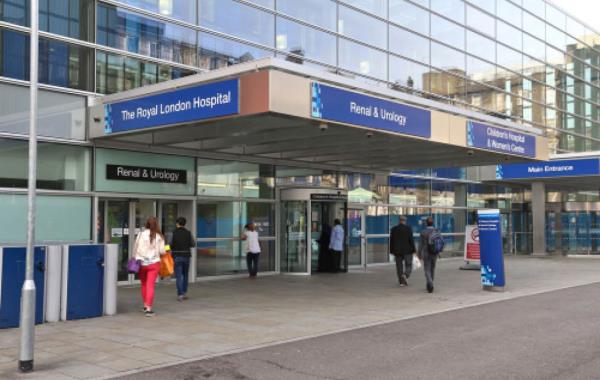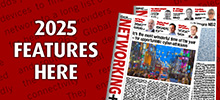03 November 2022

Poor in-building connectivity isn’t something you consider until it happens to you, and while it may be frustrating for consumers, it can be truly business or even life-threatening for private and public enterprises. Amy Saunders explores how distributed antenna systems are solving indoor connectivity challenges
Connectivity has moved on from being a nice-to-have to playing an essential role in the modern world. Enterprise, government, business and consumers alike have come to rely on ubiquitous, always-on connectivity to go about their daily lives.
In the 21st Century, we spend more time inside than ever before; work (on-site, off-site or from home), leisure, shopping, socialisation, etc. are more often than not based indoors. In the UK, the average person spends 22 hours of their day inside – that’s 90% of their time. With so many aspects of day-to-day life now relying on connectivity, having access to high-quality, seamless solutions while indoors is essential.
The challenge of indoor connectivity has never been more pressing. With the advent of the COVID-19 pandemic, and the ‘stay home, save lives, protect the NHS message, suddenly we were faced with even more time indoors. This only served to highlight the numerous in-building connectivity blackspots nationwide.
The trouble with blackspots
Blackspots have been a challenge since the advent of wireless communications. Rural and remote locations naturally have issues with connectivity if the closest cell tower is just too far away; however, blackspots are also a problem in urban environments.
Signals travel best through free space - the lower the frequency, the better the transmission through solid materials, although distance from the source is also a factor - any physical objects in the way have the potential to cause disruptions. Such disruptors include buildings, tunnels, corridors, and certainly underground networks. Certain buildings are more prone to blackspots than others, like hospitals: thick walls, safety glass, elevators, basements, and hundreds/thousands of private rooms, each with their own four walls, don’t make for great conduction. Many government buildings and corporate offices with the same makeup suffer similar poor signal availability.
“The need for cellular connectivity will not only become more necessary, but also more of a challenge. Construction materials used to make a building more environmentally friendly cause havoc with cellular signals,” said Stephen Kowal, Nextivity CCO.
The changing environment and moves towards increased digitisation, with IoT and M2M playing a key role going forwards, are also putting pressure on indoor connectivity.
“There are several challenges associated with indoor connectivity,” said Markus Nispel, EMEA CTO, Extreme Networks. “These range from the exponential increase of connected devices driven by IoT, BYOD and digital transformation in general to higher bandwidth demands and experience expectations from users and applications. All this needs to be considered when planning and operating indoor networks.”
“As our dependency grows on our mobile devices, the need for connectivity inside of buildings will also grow,” said Kowal. “Additionally, the need for machine-to-machine communication will drive growth for low power, high resiliency cellular connectivity. It is our belief that all companies will need a complete wireless strategy that includes WiFi, public cellular, private cellular, and IoT connectivity.”
In the UK, Statista reported that indoor coverage for 4G in 2019 hovered around 92.5%, with three of the nation’s four providers all covering more than 90% of locations: O2 at 95%, Vodafone at 94%, EE at 92%, and Three at 89%. O2 and Vodafone broadcast their 2G/3G signals at 900MHz, which is better for penetrating indoor environments, while EE and Three operate at 1800Hz and 2100Hz, respectively; the higher frequency waves do not travel so well through solid materials.

Around 80% of mobile calls originate indoors, so it can be frustrating to discover that you’re working or living in a blackspot. It’s been reported that working in a blackspot can reduce business productivity and cause such annoyance that one in four staff would consider quitting.
There are several different solutions for solving indoor connectivity blackspots, however, according to CommScope, just 2% of the world’s 30 billion square metres of office space is covered by in-building mobile wireless systems.
Delivering indoor connectivity
While femtocells and repeaters/boosters/extenders provide one solution to meet indoor connectivity challenges, larger, more scalable systems are better suited for enterprise applications. Indeed, for enterprise users, heavy duty solutions are required to ensure always-available, high-quality connectivity.
Small cell systems are one such solution, featuring a low-cost radio access point with low frequency power output, small footprint, but limited range. Suitable for indoor or outdoor use and supporting one or two frequencies, each individual node requires its own power supply and operates independently of other nodes, supporting up to 25 users. These are ideal for improving coverage, adding targeted capacity, and supporting new devices and user experiences. However, they are less versatile than distributed antenna systems (DAS), which can support several frequencies simultaneously for multiple carriers, and can support almost 2,000 users with just one backhaul pipe.
Indeed, DAS has really made its mark on the enterprise world in recent years. Such systems are convergent unified signal transmission mediums which connect separated antennas to provide wireless signals indoors. Multiple signals supporting both voice and data are supported via a single cable.
DAS can operate in multiple frequency bands simultaneously, while supporting different technologies and providers. High-quality mobile data networks can be delivered to venues of all types – hospitals, stadiums, airports, offices, government buildings, etc. – and support different communications protocols, while remaining relatively maintenance free. Such systems are easily and cost-effectively scaled to augment coverage, and spectral efficiency is improved, reducing interference.
“The main advantage of DAS is that it can handle very big, complex environments, like 70-storey buildings, arenas, stadiums, hospitals and travel hubs,” said Brendan Hourihane, senior director enterprise and real estate, Freshwave. “From an in-building perspective, often you only need to deploy one radio on, and sometimes above, the ceiling. So that means less kit to buy and install and it can also be easier from an aesthetic point of view which is important in premium commercial buildings.
However, in high-capacity areas you may need multiple radios should you need to deploy multiple-input multiple-output technology (which depends on the MNOs).”

Saving lives with DAS
The COVID-19 pandemic brought to light a great many problems within networks across the UK.
During the pandemic, warehouses and conference centres were converted into emergency facilities within weeks to aid national efforts. Reliable, ubiquitous mobile connectivity was central in their smooth running, with voice and data services essential for admissions, internal and external communications, supply management, etc.
Additionally, in a world with social distancing and isolation rules, indoor connectivity replaced in-person visitors for patients. WiFi was not stable or secure enough to rely on within many buildings, with quality-of-service (QoS) issues posing a risk to patient wellbeing. While the UK’s four MNOs banded together to augment capacity, this did not translate into automatically better coverage due to indoor signal transmissions challenges.
A significant number of NHS hospitals have chosen to install DAS to provide reliable connectivity for both staff and patients, some in the midst of COVID-19, to ensure that: digital patient records on tablets and mobile phones were accessible; staff were able to communicate effectively; organisation and planning (mobile devices are increasingly being used to plan rotas and for patient visits; and patients could speak with their next of kin).
One such example is Central Middlesex Hospital, which suffered with patchy or non-existent coverage at several of its buildings, and which became even more problematic during the pandemic. The Central Middlesex Hospital building covered a 36,500 square metre area over three floors and was fitted with a hybrid QUATRA signal booster and passive DAS solution with twelve systems in total to balance coverage, performance and cost. The hospital now has full mobile coverage in the required areas to support clinicians and patients. The solution is monitored and supported via a managed service from Cisilion and UCtel, ensuring that coverage is maintained and any incidents or changes in the environment are quickly addressed.
Perth Royal Infirmary has a similar story. Having struggled with poor mobile signal for years, an upgrade was required to improve connectivity and mobile coverage for staff and patients. A passive DAS was designed by Boost Pro Systems to improve the corporate network within a key administrative office area, and due to poor external signal strength, a high-gain LPDA antenna was incorporated to maximise performance. The solution ultimately delivered 3G/4G/LTE voice and data, with multi-carrier support with carrier switching. The staff have reported improved productivity and operational advantages, while benefiting from enhanced health and safety.
Proving extremely positive for the large, complex environments of the NHS, DAS delivers an effective solution to indoor connectivity challenges that can extend beyond hospitals to other large enterprises.
A distributed future?
The DAS segment can expect to see strong growth throughout the enterprise world. Indeed, the DAS market was valued at US$10.8 billion in 2021 by Future Market Insights and is expected to grow year on year by 11.1% to US$12 billion by 2022, and achieve a compound annual growth rate of 9.5% over the next ten years to reach US$29.7 billion by 2032.
However, is DAS truly the future of indoor connectivity for enterprise users? Opinions are divided.
“Many companies might be thinking about purchasing a DAS, leaky cable system or other similar approach to address coverage-related issues while trying to minimise active components like access points,” said Nispel. “However, a DAS is costly to deploy and can often lead to hidden node problems, where individual nodes can communicate with a wireless access point but not directly with other nodes. This issue is particularly common if only a single access point is connected to the DAS, severely limiting its capacity. Techniques like leaky cables can address only niche use cases, usually producing poor results.”
Some industry principles espouse WiFi as the answer for indoor connectivity challenges, particularly with WiFi 6E and WiFi 7 changing the marketplace.
“As for DAS providing cellular indoor coverage - the truth of the matter is that in the age of WiFi 6E and with WiFi 7 just around the corner, deploying a DAS is not going to give comparable results: neither performance and experience nor cost (both deployment and operational) will fit the needs of today’s networks in terms of device density and experience expectations. For robust reliability, simplicity and cost efficiency, WiFi is the optimal indoor connectivity solution,” continued Nispel. “This is especially true in offices and institutions such as universities and hospitals, where in addition to the usual applications for real time communication, IP-based communication applications like Zoom and Teams are heavily used and almost entirely remove the need for ‘native’ voice connectivity. The high efficiency and high-capacity nature of solutions such as WiFi 6E will help organisations to create bespoke indoor networks which address the needs of enterprise applications and use cases today and tomorrow.”

However, other vendors believe that WiFi is limited in its reach and effectiveness for enterprise applications.
“There is a perception that WiFi is an alternative for cellular communication, whether it is used for data offloading or WiFi calling,” said Kowal. “The reality is that there are limitations to what WiFi can do to meet cellular capabilities. WiFi still struggles with interference in large networks, roaming, variations in throughput with mobility, and security. Cellular is inherently built around each of these WiFi limitations. Also, from an end user perspective, many people do not feel comfortable attaching their devices to unknown WiFi networks. Cellular is more trusted and capable of handling mobility, prompting businesses around the world to invest in DAS solutions.”
As is so often the case, talks of a middle ground, with DAS an ideal solution for some enterprises but not others, seems most likely.
“Dedicated DAS deployments with base stations on site will still be the go-to model for large sites, but centralised base station deployments are needed to drive down the cost for enterprises and open up DAS to a wider market. Customers simply don’t have the money nor the space a dedicated DAS requires,” said Hourihane. “Virtualised RAN will help in a couple of years to drive the DAS with a cheaper radio source. Traditional DAS combined with a private 4G/5G service could also be suitable in the future and help businesses to deliver new use cases over the same infrastructure.”










